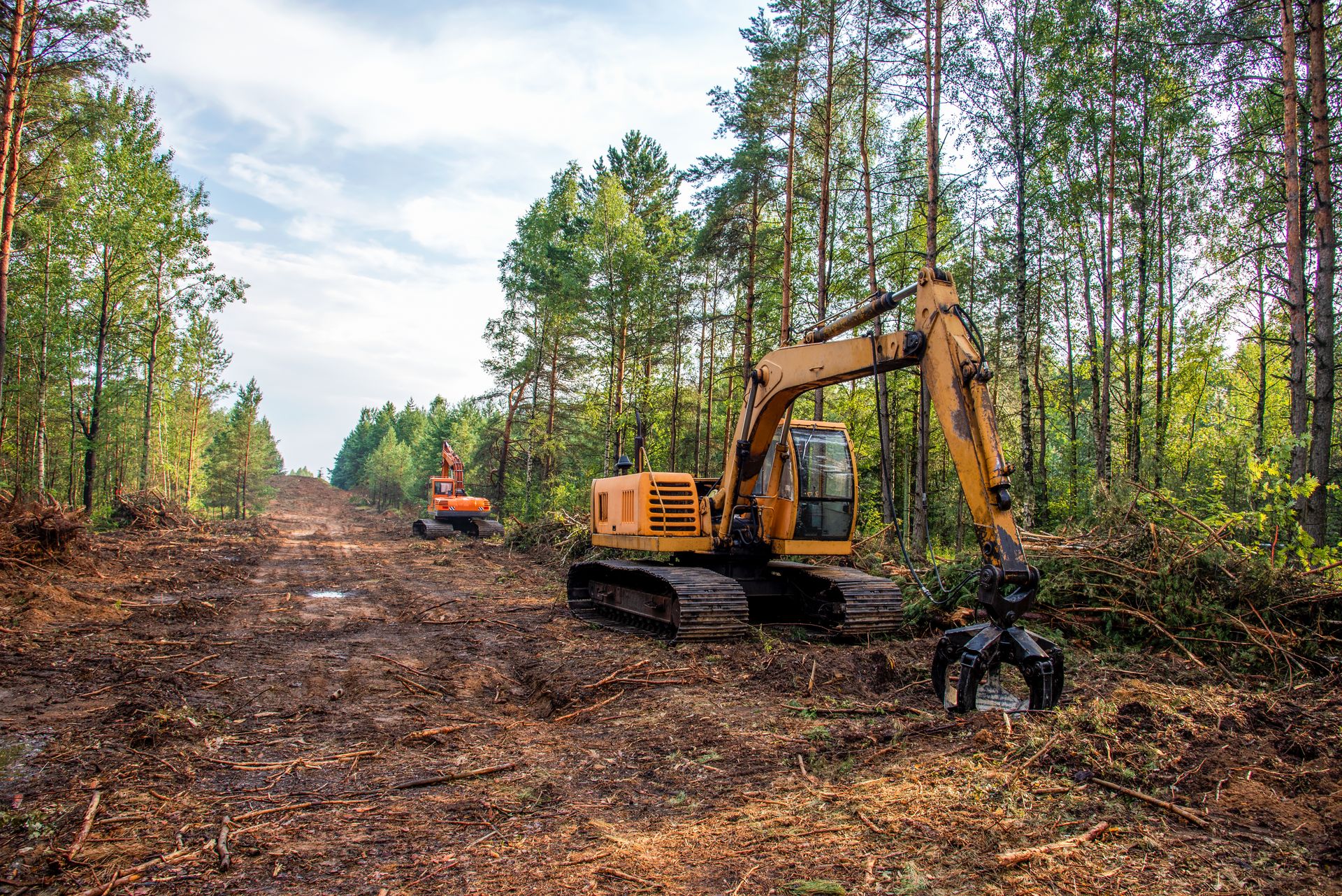Land clearing is an essential first step in any land development or construction project. While various methods of land clearing have evolved over time, the process of land clearing remains risky, labor-intensive, and costly.
To accurately plan your budget and proposal, it’s important to understand what factors influence land-clearing costs and what to expect in pricing.
Land Clearing and Development Services: What to Expect
Many people are surprised to learn that land clearing often involves more than just removing trees and stumps.
For example, land clearing may require site grading, sediment clearing, erosion control management, street cleaning, and drainage construction to handle the dirt and debris displaced during clearing. Unfortunately, these operations will add significant costs to your projected total.
In addition, the topography of a worksite will also influence the method of land clearing and its cost. For example, land clearing may involve the removal of:
- Trees and Stumps
- Shrubs and bushes
- Roots
- Grass and weeds
- Invasive plants
- Debris and litter
- Rocks and boulders
- Existing structures
- Leftover obstacles
Based on these factors, land clearing and development contractors must devise an appropriate plan to remove these obstacles and decide on what equipment will work best.
Most Common Types of Land Clearing Services
Several types of land-clearing methods vary by cost and project scope. The most common land clearing services will include (by order of most expensive to least expensive):
- Mechanical Clearing: Bulldozers and excavators will be used to clear out large and dense areas of heavy vegetation. This is considered to be the most effective but expensive method.
- Manual Clearing: This method involves lighter machinery ranging from plows to simple hand tools like chainsaws, which allow contractors to clear small plots of land. Methods such as cut and grind and bush hogging will fall under this category.
- Chemical Removal or Controlled Burning: Chemical removal using a pesticide like glyphosate or controlled burns are highly effective measures to clear land but are often forbidden by local regulations. Research appropriate regulations to see if this method is right for you.
- Grubbing and Mulching: Considered the cheapest and least invasive land-clearing method, grubbing and mulching involve removing or shredding native vegetation to clear any obstacles and protect the topsoil.
Factors Influencing Land Clearing Costs
The type of method used to clear land and its associated cost will often depend on several factors, including the project scope, its accessibility, and more:
- Land Size: Larger plots of land require more time and resources for clearing, impacting the overall cost.
- Equipment Required: Different equipment, like bulldozers, excavators, or mulchers, will be more expensive to use.
- Materials Removed: The density and type of vegetation, such as trees, shrubs, or grass, determine the complexity of clearing and impact costs.
- Debris Disposal: Removing and disposing of cleared vegetation and debris can add to the overall cost, as opposed to mulching them.
- Accessibility: Land with challenging terrain or limited access may require specialized equipment, increasing costs.
What Is the Cost of Land Clearing?
The average cost to clear an acre of land is about $700-$5,900, according to Forbes. However, these prices are heavily influenced by the land size, the debris being cleared, and your contractor’s rates.
For example, smaller wooded areas can cost as little as a few hundred dollars to clear some trees and shrubs, while two full-sized acres of land with dense vegetation and sloped fields could cost up to $10,000.
Prices do vary, so it pays to speak to multiple contractors when getting a quote.
What to Look for in Land Clearing Services
To find the best land clearing contractor for your project, be sure to look for a company with the right:
- Specialization: Search for a company that specializes in the types of services you are looking for. Bundling land-clearing services with erosion control measures and other land development services can save you money and ensure consistency.
- Equipment: Search for companies that offer the right equipment for any job you require, including bulldozers, excavators, etc.
- Permits and Regulations: Ensure contractors are properly permitted to work in your area and follow all local and federal regulations.
- Insurance Coverage: Look for a company that offers protection so that you are not on the hook for any expensive repairs.
- Cost Transparency: Find a company that offers an upfront and transparent quote so you are not caught off guard by hidden fees and costs.
Conducting proper research will help you find the best land-clearing contractor at the right price for your next construction project.
FAQs: Land Clearing Costs
Can I do land clearing myself?
While small-scale clearing might be possible, professional expertise is recommended for efficiency and safety.
How can I estimate land clearing costs?
Consulting local contractors and considering factors like land size and vegetation helps estimate costs.
What impact does land clearing have on the environment?
Land clearing can disrupt ecosystems. Employing environmentally conscious methods minimizes negative effects.
Are there regulations for land clearing?
Yes, regulations differ by jurisdiction. Compliance with local laws and environmental standards is essential.

